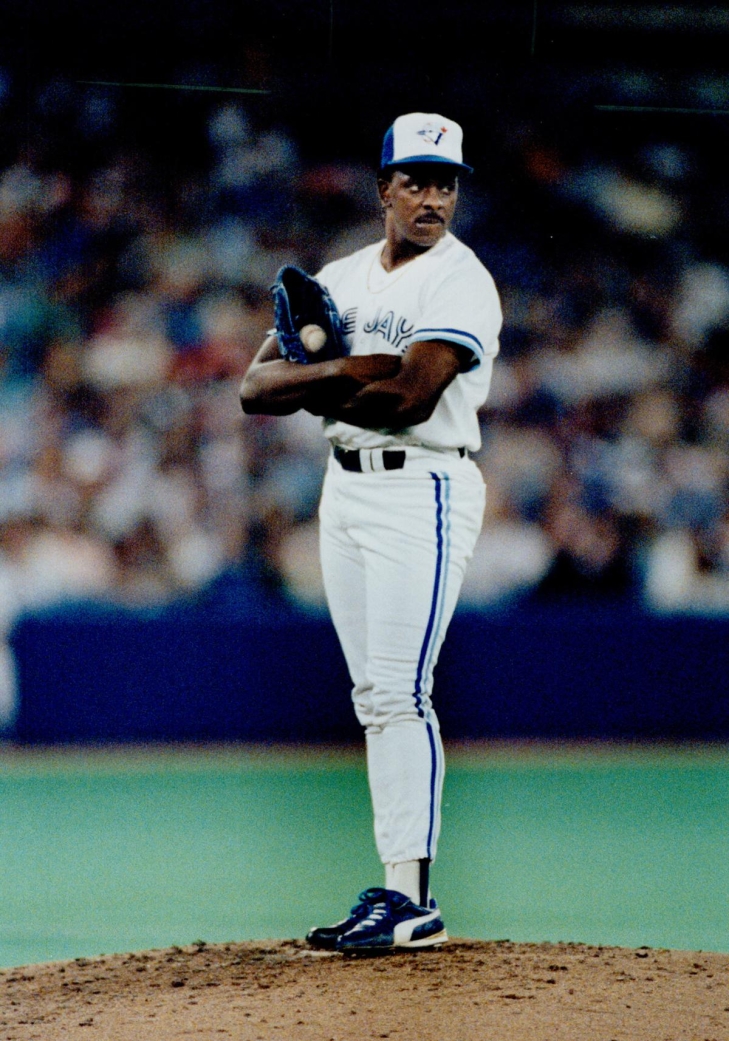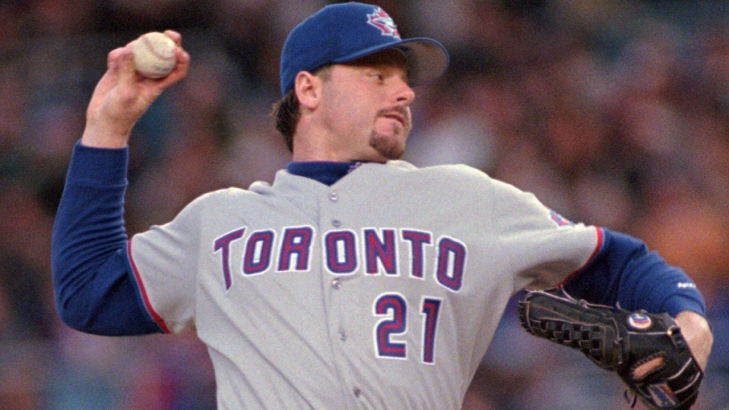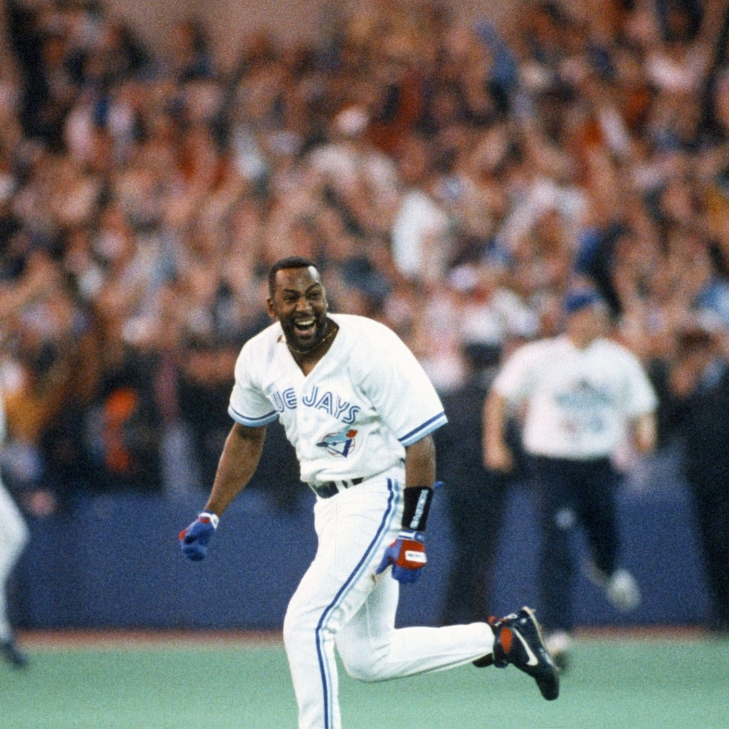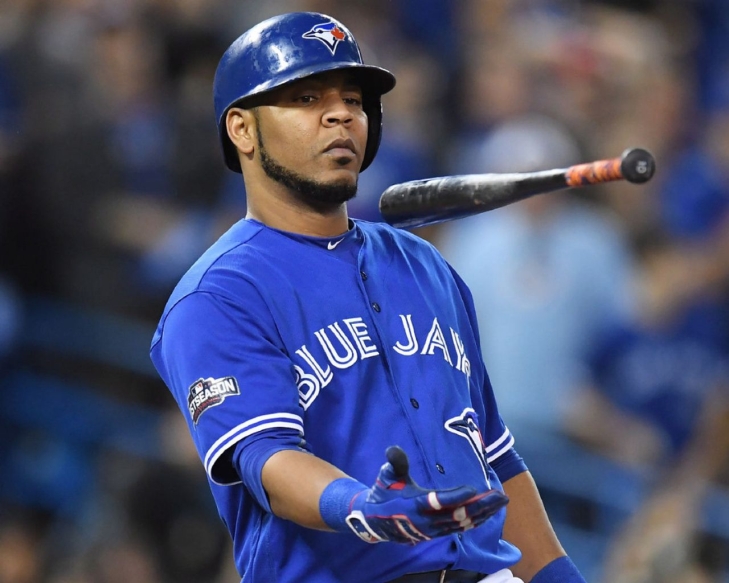
Committee Chairman
19. Juan Guzman
Juan Guzman signed with the Los Angeles Dodgers as an Amateur Free Agent in 1985, but two years later, while still in the low Minors, he was traded to the Toronto Blue Jays. He finally made his way up to the Majors in 1991, where he went 10-3 and was a distant second to Minnesota's Chuck Knoblauch.
Over the next two seasons, Guzman was part of an electrifying team that won the 1992 and 1993 World Series Championships, and he went 30-8 over that time. Guzman finished seventh in Cy Young voting, and it looked like it was the start of something special for the Pitcher, but it was not to be.
Guzman struggled in 1994 and 1995, posting ERAs of 5.68 and 6.32, respectively, with WHIPs over 1.6. It looked like it might be over for Guzman, but he rebounded in 1996, winning the ERA Title (2.93) while also leading the AL in ERA+ (171), WHIP (1.124), H/9 (7.6) and SO/BB (3.11). Amazingly, he did not receive any Cy Young votes.
Guzman struggled again the year after and was traded mid-season to Baltimore. With the Blue Jays, Guzman went 76 and 62 with 1,030 Strikeouts.
22. Roger Clemens
Roger Clemens was only a Toronto Blue Jay for two seasons, and though sports history forgets this, his two-year performance in Canada was one of the best back-to-back regular seasons in MLB history.
Before Clemens signed with the Blue Jays, he was the young superstar for the Boston Red Sox. Clemens was, at that point, a 13-year veteran, but his skills looked to have eroded. Toronto thought otherwise, and while we can look at potential PED use by Clemens, it was a colossal return to greatness by the Pitcher and what arguably placed him in HOF contention.
Clemens signed with the Blue Jays after the 1996 Season, and many in Boston thought that their division rivals had made a mistake. The flamethrower reclaimed his past glory, and though Toronto was no longer a World Series contender, Clemens reclaimed his spot as the top Pitcher in the American League.
Clemens won the Pitcher's Triple Crown in 1996 and 1997 and was the Cy Young winner in both seasons. He also led the AL in ERA+ and FIP in both years, and was first in WHIP in 1996. There has never been a Jays Pitcher before or since who had back-to-back seasons this good. The problem for Clemens was that there was no similar talent around him, and the Jays were not threats to challenge for a Pennant while he was there.
Following the ’97 campaign, Clemens asked to be traded to a contender, and his wish was granted when the Jays traded him to the Yankees.
In his two-year stay in Toronto, Clemens had a bWAR over 20 with a 41-13 record.
15. Joe Carter
The ranking of Joe Carter is complex, and it feels like there is always one player in every Top 50 where this occurs.
Hopefully, we can explain.
Before the 1991 Season, Carter was traded from San Diego for Fred McGriff and Tony Fernandez in a deal that brought over future Hall of Fame Second Baseman Roberto Alomar. Carter brought the Jays power, winning two Silver Sluggers for Toronto and 203 Home Runs over seven seasons with 736 RBIs. The MVP voters were fond of Carter, as his consistent top-ten finishes in Home Runs and RBIs earned him two top-five finishes for the most coveted individual award in Baseball (5th in 1991 and 3rd in 1992).
After helping to propel Toronto to their first World Series in 1992, Carter took them to another Fall Classic in 1993 and blasted the walk-off Series-winning tater in Game 6, which will forever be the biggest Home Run in franchise history.
Carter stayed with Toronto until 1997 when he signed with Baltimore as a Free Agent.
Here is what kept Carter out of the top ten. In no season did he ever walk 50 times, nor have an OBP over .330. Carter’s OPS for Toronto is under .800, which for a cleanup hitter is a little surprising. He was also a terrible defensive player and had a bWAR as a Blue Jay well under ten.
With all the negatives aside, Carter is the most iconic player in Jays history, and it will be a hell of a lot to supplant that.
The Blue Jays named Carter to their Level of Excellence, and he is also enshrined in the Canadian Baseball Hall of Fame.
13. Edwin Encarnacion
Before his mid-2009 trade from Cincinnati, Edwin Encarnacion was a non-descript player with a lot of power but bordering on one-dimensional. This was the player that Toronto wanted when they traded Scott Rolen at the trading deadline, and they would eventually be proven right.
After an inconsistent 2010 Season, Oakland claimed Encarnacion off of waivers but was non-tendered, allowing him to test free agency. The Jays signed him back, and the patience began to pay off.
Encarnacion was never a great fielder, and by mid-2011, he played mainly as a Designated Hitter. He finally broke out in 2012, blasting 42 Home Runs, with 110 RBIs and career-highs in all three Slash Line components (.280/.384/.557). Encarnacion was 11th in MVP voting, and over the next five years, he would at least receive votes for the MVP in four of them.
With Encarnacion in place at DH, he proved he was not a one-season fluke, as he eclipsed 30 Home Runs over the next five years and had at least 98 RBIs in all of them, including a league-leading 127 in 2016. Encarnacion never won the Edgar Martinez Award as the league's top DH, but in the mid-10s, he was among the best and helped Toronto reach the playoffs in 2015 and 2016.
Encarnacion left the Jays for Cleveland as a Free Agent in 2017, and for the team, he batted .268 with 239 Home Runs with 977 Hits.





